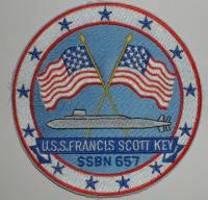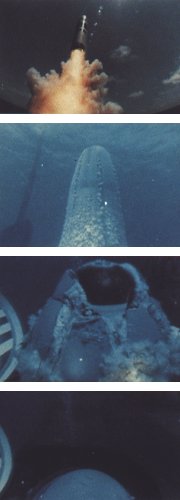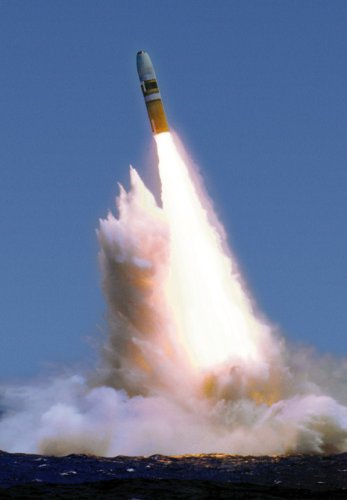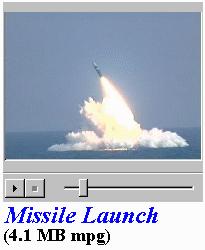
25 Sep 2023
25 Sep 2023 - 1546
25 Sep 2023
18 Oct 2021
Past Reunions
Reunion 2022
PHOTOS
By Location
By Decade
July 11, 2020
March 30, 2009
June 24, 2009
July 31, 2019
09 Feb 2022
Aug 27, 2018
May 27, 2009
USS Francis Scott Key
Navy Unit Commendation
September 1978 - October 1979
First Trident I missile launched from the USS Francis Scott Key.
This is a movie of the launch of two Trident I missiles from the Key. The Key Blue and Gold Crews were awarded a Navy Unit Commendation for the launch and subsequent refitting of the Key to Trident I missiles The Key also became the first submarine to go on deterrent patrol with a full compliment of Trident I missiles.
Click to watch movie. Give it a minute to load. You must have a movie viewer software such as Windows Media Player to view the movie.
A montage of seven views showing parts of the launching of a Trident I C-4 missile from the submerged nuclear-powered strategic missile submarine USS FRANCIS SCOTT KEY (SSBN-657) courtesy of US Navy and Lockheed Martin.
 |
 |
|
| Photos: U.S. Navy | Photo: Lockheed Martin Missiles & Space | |
Bill. Kaczmarek was a missile tech on the Key during the first Trident launch. This is the e-mail we received from Bill describing that launch.
The Key was chosen to execute the first
submerged launch of a Trident missile back in 1979 and we steamed from our
home port of Charleston, SC to Cape Canaveral loaded with ballast in our missile
tubes. When we got there, we outfitted the boat with a telemetry mast and
then loaded two trident D-1 test missiles (picture 1,
2) with the idea of doing two shots.
When the boat was finally rigged, we proceeded
out to the test range where we launched the first bird. About three
seconds into the launch, the status reports stopped being read and after a few
more minutes we found out that the missile failed and was destroyed as it hit
the ocean about a mile away from us. I remember the ship rocking as the
shock wave hit us and the collision alarm going off. It was at his point
that I also met Vice Admiral Carr, head-on. When the collision alarm
sounded, I came around the port side missile compartment, upper level corner to
secure the W/T door at about flank speed and ran smack dab into him as he was
approaching the corner. Those stars on his collar looked huge and I
thought I'd get in trouble for running over an Admiral but he was scrambling to
get out of my way and told me to carry on.
At that point, the ship was recalled to port
and an investigation was started to determine what happened. Later, back
in port, I was given a photo taken from the USS Range Sentinel that showed why
the missile failed. (I wish I could find that image today!)
After the unsuccessful launch attempt, we
returned to port and turned around the fired tube (Picture
1, 2). We then found ourselves in the
position of not having a mission to execute and a whole patrol cycle to do it,
so COMSUBLANT sent us to Annapolis to show the middies
what a real live submarine looked like and try to recruit some of them for the
pirating life. I actually met a kid from my home town who was a
midshipman (I knew his father) at the time.
This Picture
the underwater video cameras in position over the tubes that we were to fire.
If you watch some of the submarine shows on the Discovery or History
Channels once and a while, you can make out the Keys' missile hatches as they're
opened for the launch. Ours weren't painted like billiard balls (ours
had stars) so they're pretty distinctive.
end of e-mail
